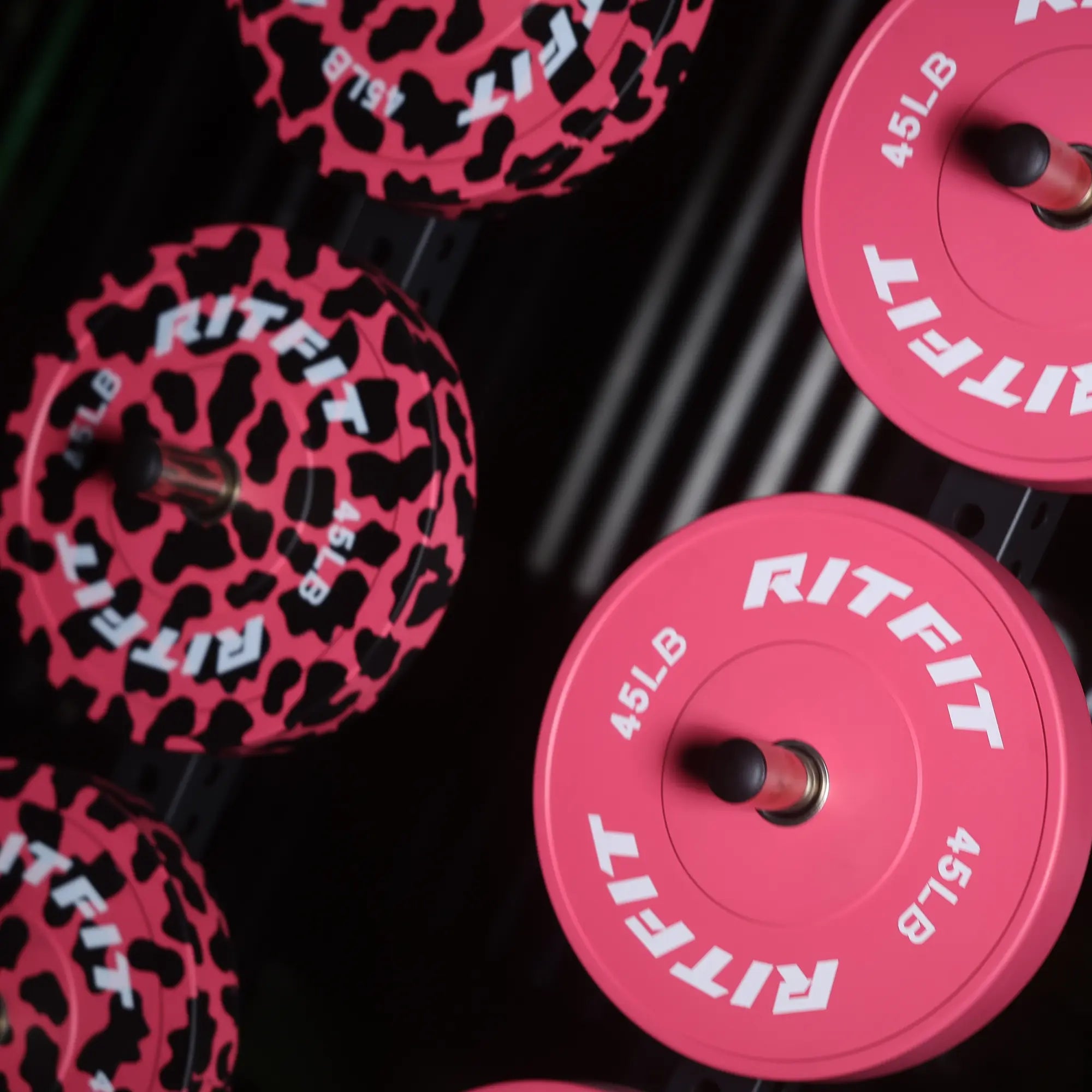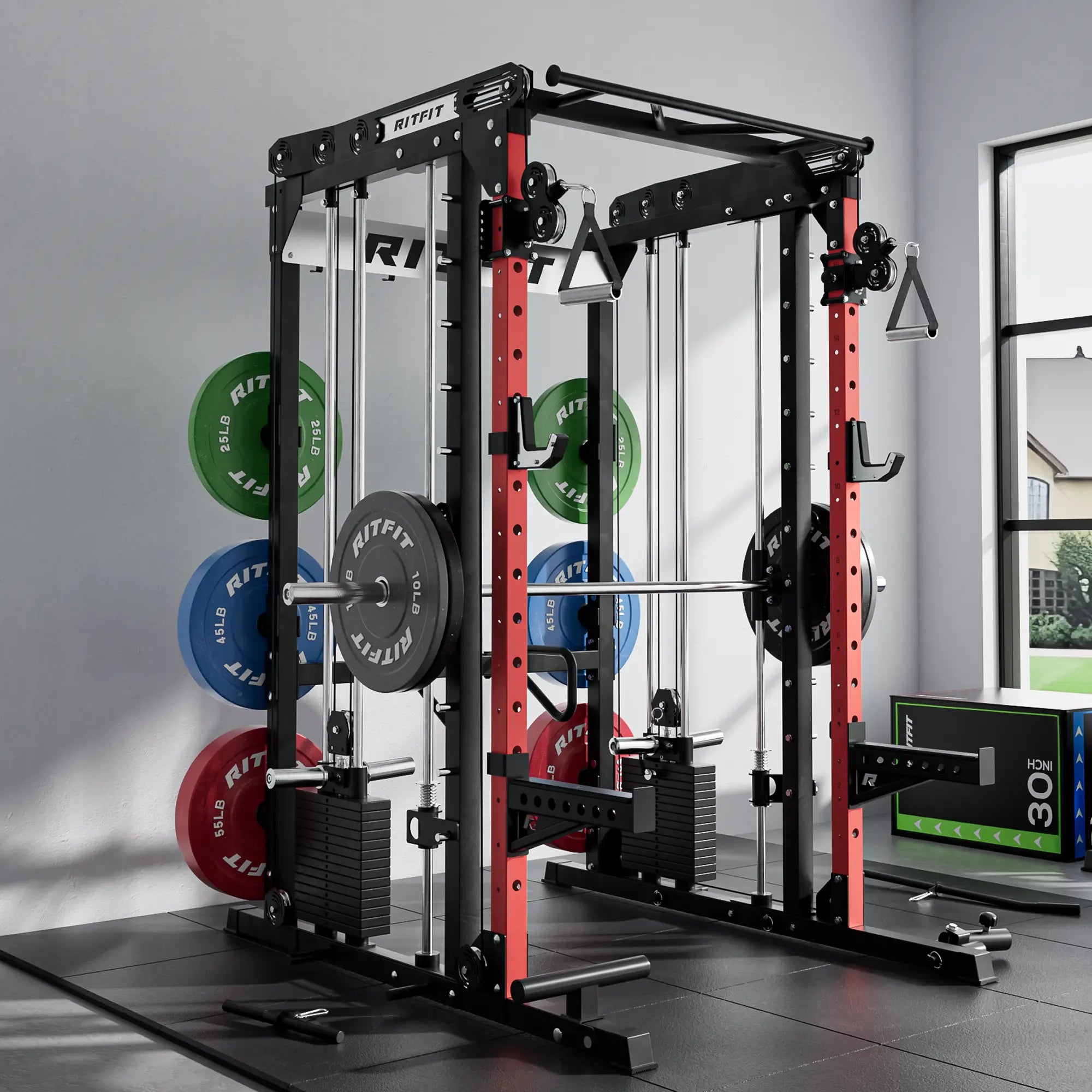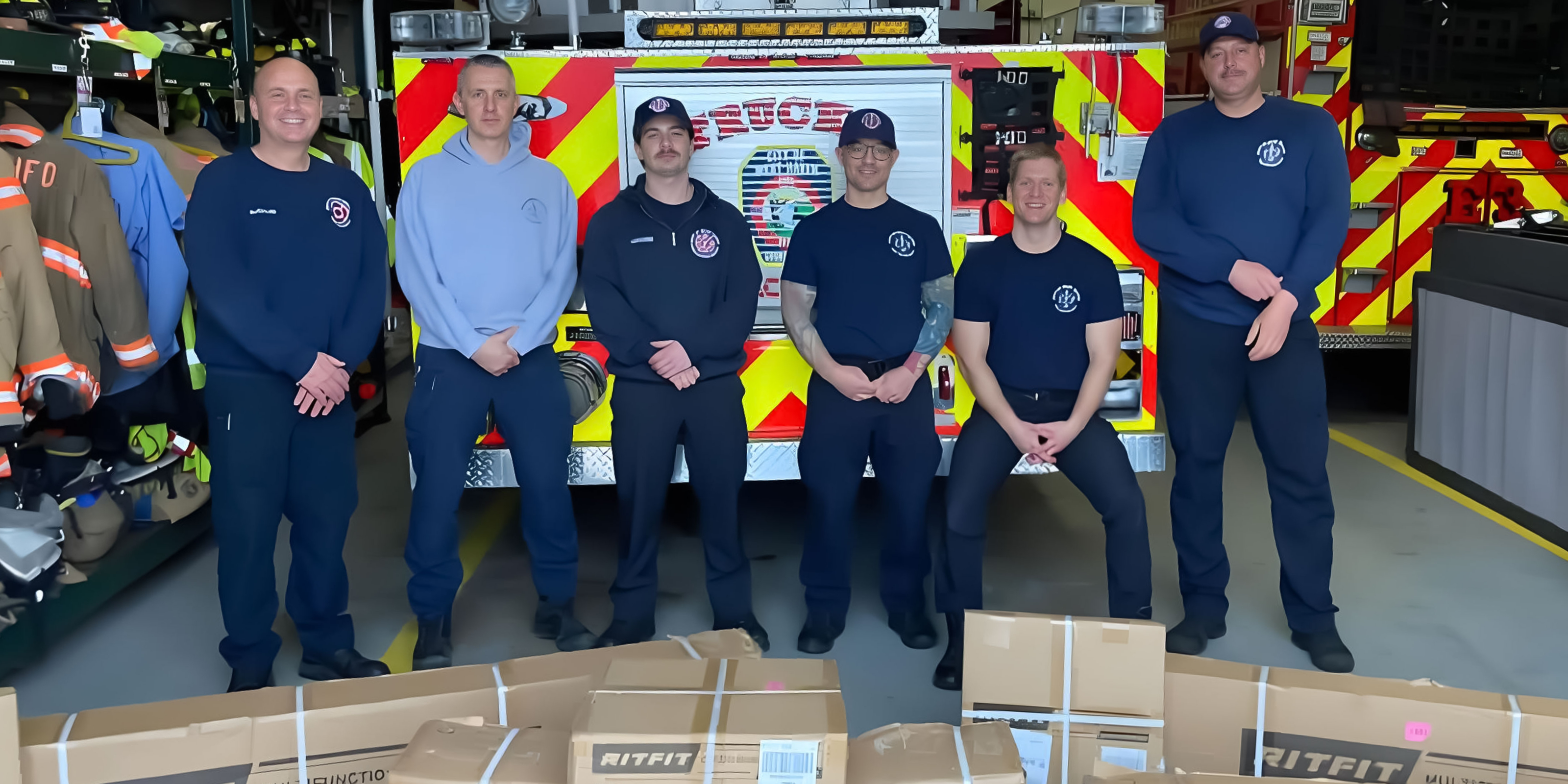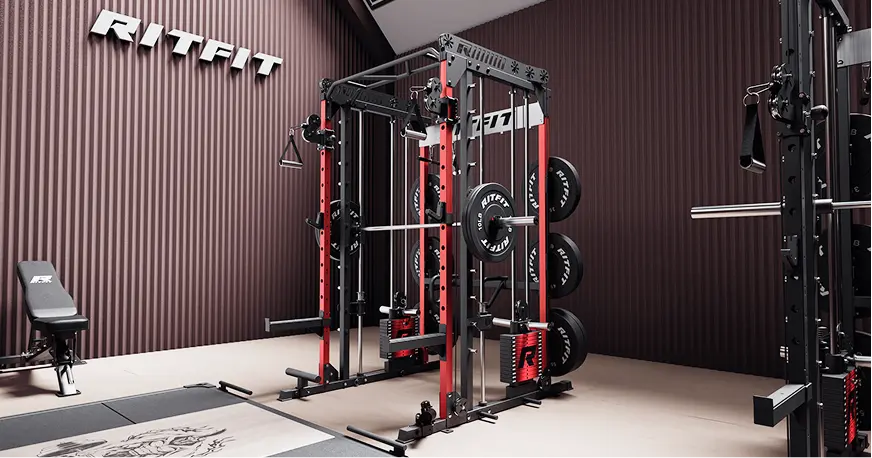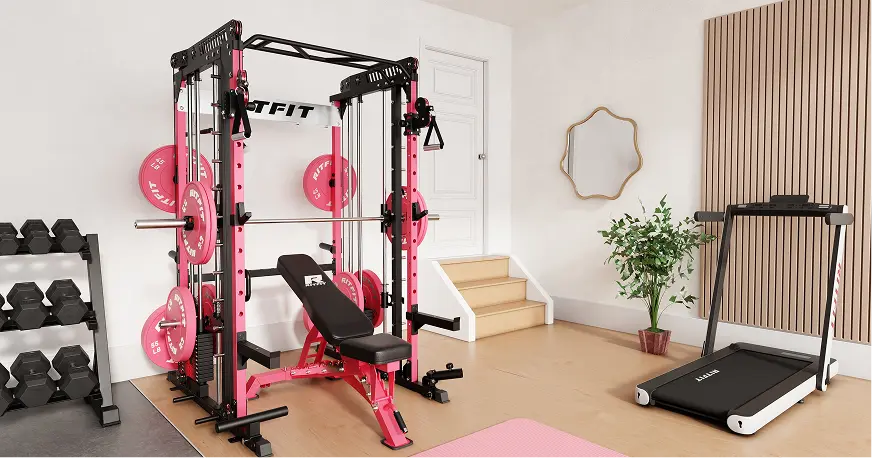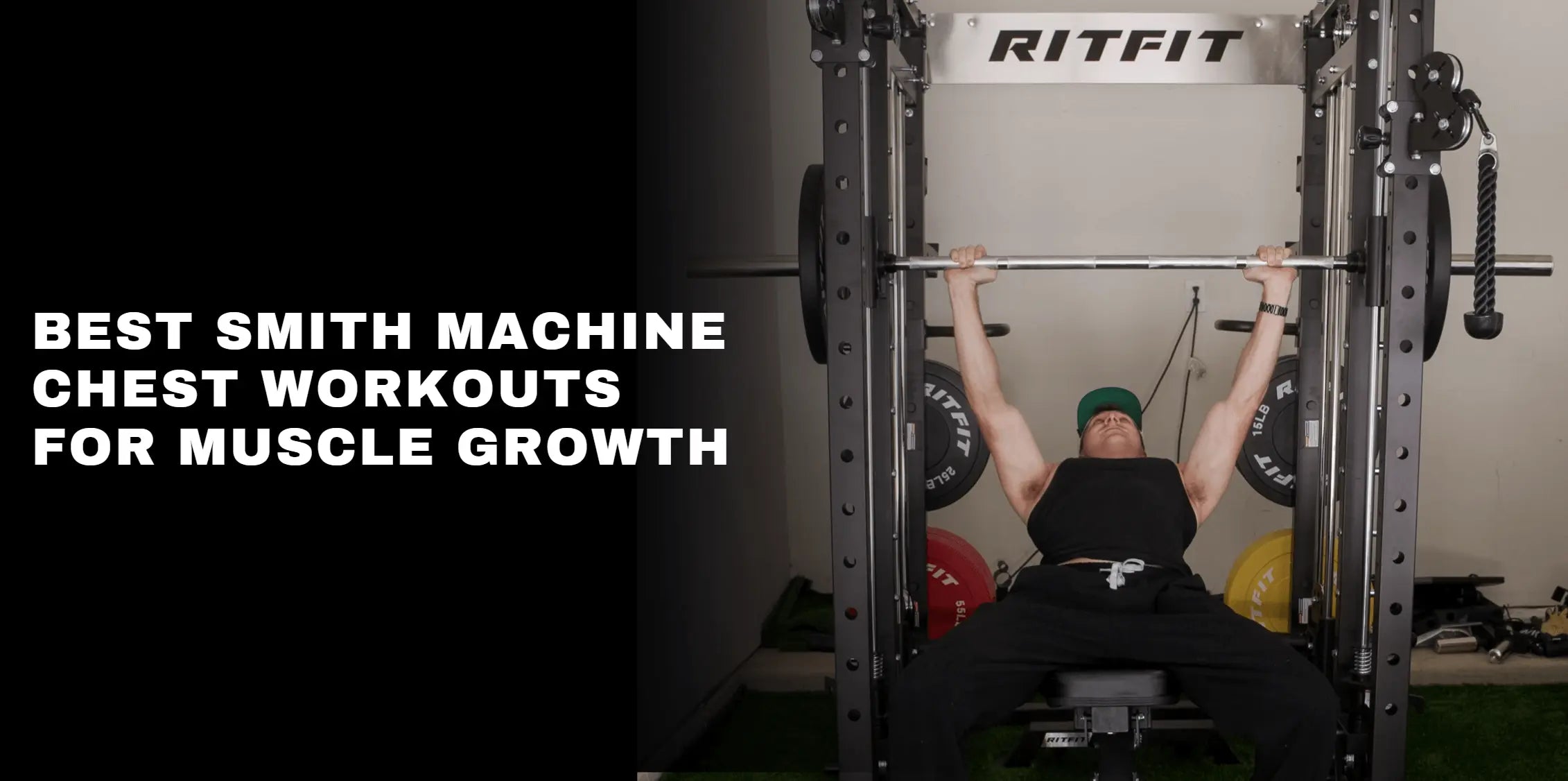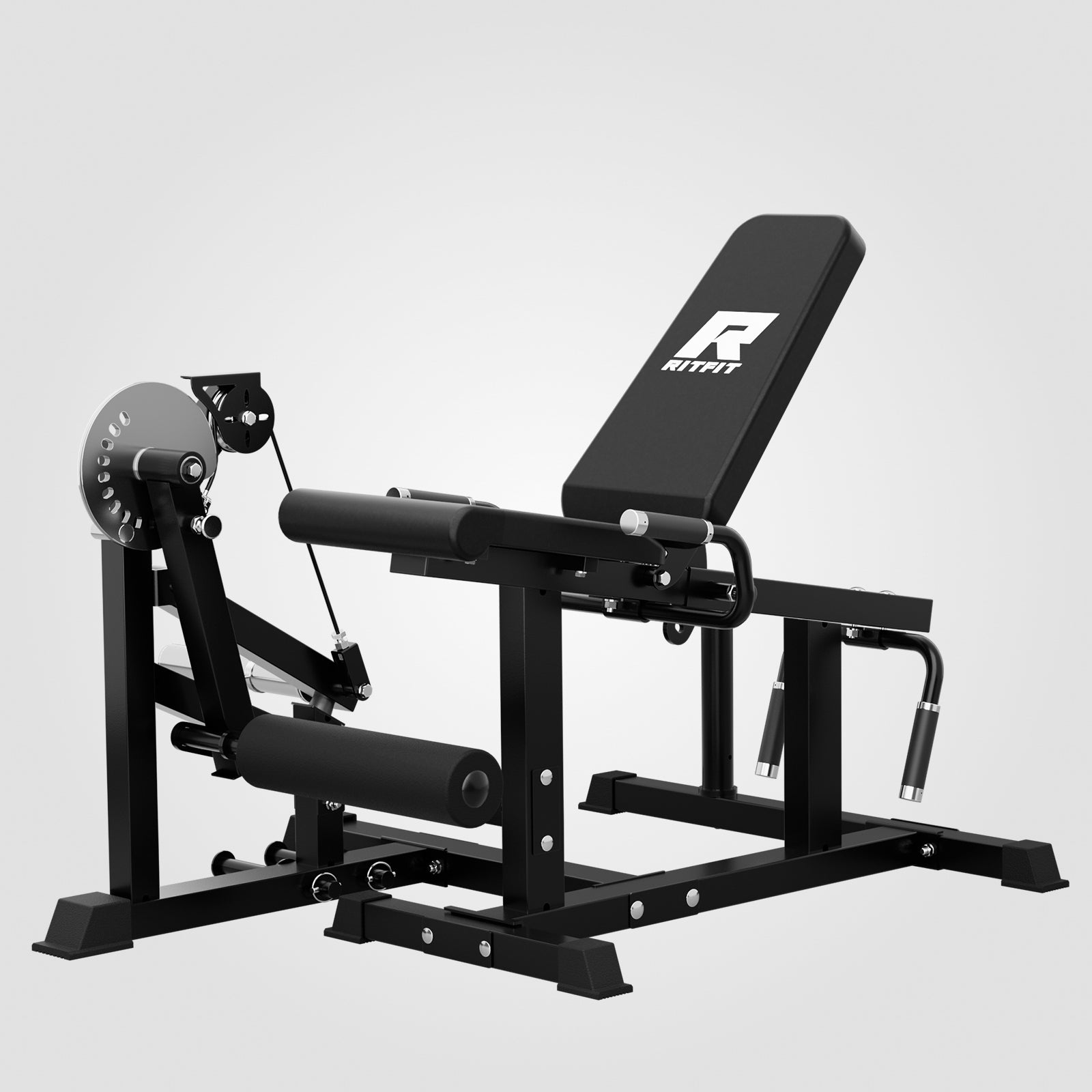Table of Contents
"Small calves" are a common gym punchline, but they do not have to be your reality. If you are tired of struggling to balance heavy dumbbells or seeing zero growth from endless bouncy reps, you are likely missing the two key ingredients for lower leg mass: stability and an extreme stretch. It is time to stop blaming genetics and start fixing your mechanics.
The Smith Machine Calf Raise is the game-changer you need, allowing you to safely overload the muscle with zero wobble. This guide breaks down the exact setup, key benefits, and common mistakes to avoid so you can finally isolate the gastrocnemius and turn those stubborn lower legs into diamonds.
What is the Smith Machine Calf Raise
The Smith Machine Calf Raise is a controlled standing calf exercise where you use the guided bar path to stay stable while driving your heels upward through a full range of motion. Because the bar travels on fixed rails, Smith machine calf raise variations make it easier for beginners to balance while also giving advanced lifters a safe way to load their calves heavily.
When you perform calf raises with a Smith machine setup, you simply position the bar across your upper traps, stand on a plate or small platform, and lift your heels as high as possible to activate the gastrocnemius and soleus. This movement teaches you to focus on tempo, mind muscle connection, and proper dorsiflexion so your calves grow stronger and more defined over time.
The Benefits of the Smith Machine Calf Raise
Building impressive lower legs requires a combination of heavy resistance and strict mechanical control, and the Smith machine provides the perfect environment to master both simultaneously. It effectively bridges the gap between safety and intensity, allowing you to target these stubborn muscles more effectively than almost any other free-weight variation available in the gym.
Here is why you should incorporate this movement.
Enhanced Stability and Safety
The static vertical path of the machine is excellent for novice or recovering users, as it acts like a virtual spotter that will prevent you from careening to one side and onto the ground. You can put all your attention into the mechanics of movement without worrying about a trip because you weren't maintaining balance, or dropping dumbbells, make that fear go away with confidence comes muscle.
Superior Progressive Overload
Because you're not spending energy trying to balance the unwieldy free-weight bar on your upper back, you can load up more weight to really maximise mechanical tension on the calves. This ability to safely work up close to failure with heavier loads is probably the main mechanism of hypertrophy in these dense, weight-bearing muscles that are used to bear your body weight all day.
Optimized Range of Motion
With a rugged stepper or block under the bar, you can let your heels sink well beneath the height of your toes, which forces an intense stretch on your calf muscles with heavy tension—essential for fully maximizing growth in them. This long distance from deep dorsiflexion to high peak plantarflexion will guarantee that you are utilizing the most muscle fibers during each and every rep.
Correcting Muscle Imbalances
The Smith machine is also incredibly stable, making it an awesome tool to rely on when performing single-leg calf raises and finding, then correcting, strength imbalances between the left and right legs! Working one side at a time helps ensure that your dominant leg doesn't begin to take over the movement. Excellent for balanced muscle growth and functional looks.
Strict Isolation and Control
This variation prevents as much "cheating" by preventing you from using forward or backward momentum to lift when doing raises while standing with dumbbells. You're also forced to go in a vertical direction (the rest of your leg is not in use), which puts all the emphasis on the gastrocnemius and doesn't allow momentum any opportunity to steal those gains you've worked so hard for.
Muscles Worked by the Smith Machine Calf Raise
Understanding the specific anatomy of your lower leg is the secret weapon for establishing a strong mind-muscle connection during your training sessions. This exercise delivers a comprehensive stimulus to the entire posterior chain of the lower leg, ensuring balanced development for both aesthetic definition and athletic performance.
Primary Muscles
Gastrocnemius
This is the prominent, two-headed superficial muscle that creates the iconic diamond shape on the back of your leg and accounts for most of your visual size. Since this muscle crosses the knee joint, Research shows that standing (extended-leg) calf raises produce significantly greater hypertrophy in the gastrocnemius than seated (bent-knee) raises[1].
Soleus
Situated deep beneath the gastrocnemius, this flat, endurance-focused muscle runs all the way down to your Achilles tendon and provides essential width to the lower leg. Although it is often associated with seated exercises, it works synergistically with the gastrocnemius during standing raises to generate powerful plantarflexion and stabilize your upright posture against the heavy load.
Accessory Muscles
Tibialis Anterior
This muscle is located on the front side of your shin and serves as the foot brake Number one. It stops you from slapping that heel onto the ground too hard once it's lifted off, going downhill. Developing this antagonist muscle is crucial for preventing common problems such as shin splints, and it ensures that you maintain perfect control on the eccentric lowering aspect of the lift.
Intrinsic Foot Muscles
Your flexor hallucis longus (and smaller stabilizers in your foot) are working overtime to grip the edge of the block or stepper. They are also responsible for making sure your arches don't collapse under the load of that heavy Smith machine bar, thus providing a secure and stable base to press upward into a peak contraction.
How to Do Smith Machine Calf Raise
Mastering the Smith machine standing calf raise requires strict attention to setup and alignment to ensure you target the correct muscles without compromising your spinal health.
Follow this execution sequence.
Step 1: Position the Block
Put a sturdy elevated platform immediately under the guided bar path, such as the proper calf block or wider bumper plate. Make sure that the surface is completely non-slip, and you can place it so that your heels are able to travel all the way to the floor without actually touching it as the depth of this move matters.
Step 2: Unrack the Bar
Position the barbell roughly at shoulder or neck height before commencing. Stand with your feet hip-width apart, standing on one edge of the block and under the bar (in a good rack position with the pads comfortably set on top of your upper trapezius). Unlock the safety latches by rotating your wrists and pressing your legs out, making sure that you maintain a very tiny bit of an arch in your knees, never hyper-extending the joints.
Step 3: Lower Your Heels
Execute the smith machine calf raise by descending your heels towards the ground in about 2-3 seconds as you negative each rep and concentrate on really stretching out from your Achilles all the way up through to your knee, maintaining a perfectly upright posture with core braced hard.
Step 4: Drive Upward
Press down hard through the balls of your feet to lift your body straight up, with emphasis on plantar flexing your ankles as high as possible. Pause for one full second at the top to reinforce peak contraction, and also to make sure you're not bouncing out of the bottom with momentum. This study showed that performing calf raises at longer muscle lengths (i.e., emphasizing the initial, stretched portion of the range of motion) led to greater increases in gastrocnemius thickness[2].
Step 5: Re-rack Safely
Keep up the controlled pace for every rep, and go for a higher rep range to fatigue the endurance-designed muscle fibers of your calves. At failure, rotate the bar out readily enough to allow the safety hooks to re-engage in the closest hole and step down off the platform slowly so you don't lose your balance on the low block.
Workout Routine For Beginners
To build a set of impressive calves takes more than stacking on heavy plates; it starts at ground level. This teaching routine is designed to be the first routine you use in order to develop a good mind,muscle connection, and master correct form before going heavy.
Follow this entry-level circuit.
3 Sets of 15-20 Reps
Concentrate on a higher number of repetitions with lighter weight to get the feel for the movement without putting undue stress on your ankles. This increased volume is what helps you get the "burn" in that specific muscle and know you are getting fiber recruitment instead of just moving weight.
The 2-1-2 Tempo
Lower the heels for a count of two, hold at the bottom for one count to stall momentum, and push up with a controlled repetitive tempo of two. This rigid tempo will keep you from bouncing and force the Gastrocnemius to carry all of the weight during both parts of each repetition.
60 Seconds Rest
Rest a full 60 seconds between sets to flush the accumulated lactic acid from your lower legs. Getting enough rest allows you to keep good form and proper balance on the following set, rather than racing through another round of crappy reps because your muscles are tired.
Smith Machine Calf Raise Tips
If you really want to turn your lower legs from stubborn to standout, you must move up a gear from simply going through the motions and begin using some advanced training techniques. These pro tips are engineered to promote maximum fiber recruitment and metabolic stress, so you can push past plateaus that inevitably halt calf development.
Apply these pro techniques.
Pause at the Bottom
Maintain the extreme position for a full two seconds to release some of the stored energy in your Achilles tendon from the stretch reflex. This pause at the bottom prevents your body from using inertia and elastic momentum to "bounce" the weight up, meaning they have to rely on muscle fibers alone to do all of the work laterally from a dead stop.
Ditch the Running Shoes
Do this exercise in shoes or socks for maximum grip and ROM. When it comes to pushing back force, those cushioned running shoes are absorbing the very push you are trying to send into the floor via the block, diminishing your ability to leverage and maintain balance under serious weight.
Aim for Higher Repetitions
The reason for this is that the calves are predominantly an endurance muscle primarily composed of slow-twitch fibers and will usually respond best to high volume (15 – 25 rep) sets. You would want to use a weight here that is not too heavy and allows for perfect form. This will be an extended set. The objective here is to create the greatest amount of metabolic stress possible while also creating a "pump".
Slow Down the Descent
Resist gravity on the way down by taking three full seconds to lower your heels back to the starting position. The eccentric (lowering) phase causes the most micro-tearing in muscle fibers, which is the primary catalyst for hypertrophy and long-term strength gains.
Common Mistakes to Avoid in Smith Machine Calf Raise
Even with the guided stability of the Smith machine, it is surprisingly easy to fall into bad habits that shift tension away from your calves and onto your joints. Recognizing these technical errors early is the best way to prevent nagging Achilles tendonitis and ensure you get the most growth out of every set.
Watch out for these errors.
Bouncing Out of the Bottom
Many lifters rely on the natural elasticity of their Achilles tendon to "bounce" the weight up quickly, which robs the target muscles of necessary tension. You must perform a deliberate pause at the very bottom of the movement to eliminate momentum and force the gastrocnemius to do the heavy lifting.
Shortening the Range of Motion
The reason being, as with most exercise, lifting too much weight results in "half reps" where you don't quite stretch the heel down all the way, and you also don't fully contract up onto your toes. Opt for a lighter load so that your heel can drop below the bottom of the platform, and your ankle can fully extend at the top so you recruit the most fiber.
Rolling the Ankles Outward
Fatigue causes your foot to tend to roll outwards (supinate) onto the outside of the foot, and you impose potentially harmful shear forces on the lateral ligaments. Concentrate on pushing through the ball of your big toe to evenly distribute pressure across the foot and stay vertical.
Bending the Knees Excessively
Bend the knees slightly during a lift, however, and you effectively turn it into a partial squat, and the focus is taken off of the gastrocnemius. Legs should be locked out, but only to a "soft" lockout to prevent any knee grinding, so you keep increasing tension on the lower leg muscles.
Final Thoughts
This guide breaks down everything you need to know about Smith Machine Calf Raises, from proper setup and execution to the muscles involved and the biggest mistakes to avoid. If you want bigger, stronger, more defined calves, this straightforward walkthrough gives you the tools to finally train them with stability, control, and real intensity.
Start adding Smith Machine Calf Raises to your routine and feel the difference that strict form, deep stretch, and rock-solid stability can make in your lower-leg development.
References
- Kinoshita M, Maeo S, Kobayashi Y, et al. Triceps surae muscle hypertrophy is greater after standing versus seated calf-raise training. Front Physiol. 2023;14:1272106. Published 2023 Dec 13. doi:10.3389/fphys.2023.1272106
- Kassiano W, Costa B, Kunevaliki G, et al. Greater Gastrocnemius Muscle Hypertrophy After Partial Range of Motion Training Performed at Long Muscle Lengths. J Strength Cond Res. 2023;37(9):1746-1753. doi:10.1519/JSC.0000000000004460


